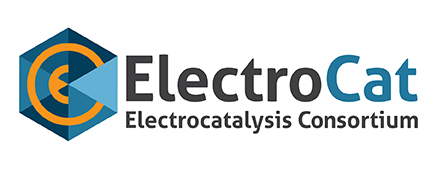| Laboratory: |
Los Alamos National Laboratory (LANL) |
| Capability Expert: |
Rod Borup, [email protected] |
| Capability Details: |
|
| Title: |
Internal Surface Energy and Wetting Properties of Electrocatalysts |
| Class: |
Processing Capability |
| Description: |
PGM-Free catalysts have been shown to be hydrophilic and can have issues with flooding due to buildup of water [1]. Inverse Gas Chromatography (IGC) is a highly sensitive and versatile gas phase technique used to study the surface and properties of particulate and fibrous materials. In IGC, the roles of the stationary (solid) and mobile (gas or vapor) phases are inverted from traditional analytical gas chromatography (GC). IGC is advantageous in that it allows for determination of total, dispersive, and specific contributions to the surface energy of a solid within a single experiment. By utilizing different probe molecules, IGC provides the dispersive surface energy as well as the acid-base properties. The acid-base chemistry of carbons is important since many processes are affected by specific rather than dispersive interactions. Dispersive surface energies are determined by an injection of a series of alkanes from hexane to nonane. Polar probe molecules are used determine the acid-base characteristics of the material [2].Surface energy determines the wetting affinity of liquid water for both the various components of a fuel cell including the catalyst layer, membrane, and GDL, as related to water removal and retention [3]. The proper balance of hydrophobic and hydrophilic regions must be maintained or mass-transport performance losses in the catalyst layer will be experienced. By defining the relative wetting properties of PGM-Free catalysts, and how different synthesis techniques affect the internal wetting properties, catalyst that minimize losses due to internal water flooding should be enabled. |
| Capability Bounds: |
IGC analysis is limited to materials which are packed into columns of 2, 3, and 4 mm inner diameters. Materials that cannot be uniformly packed can lead to gas by-pass making analysis more difficult. |
| Unique Aspects: |
Surface wetting properties are commonly studied and measured by contact angle measurements including sessile drop, and Wilhelmy Plate; IGC is unique in its ability to determine the wetting properties internal of a porous material, such as powder electrocatalyst or fuel cell GDL materials. |
| Availability: |
IGC is available in the LANL fuel cell program, with two IGC’s owned and operated by MPA-11, the home group of the LANL fuel cell program. The acid-base chemistry of activated carbons is of interest since many processes are affected by specific rather than dispersive interactions. |
| References: |
- S. Hussey, D. Spernjak, G. Wu, D.L. Jacobson, D. Liu, B. Khaykovich, M.V. Gubarev, J. Fairweather, R. Mukundan, R. Lujan, P. Zelenay, R.L. Borup, “Neutron Imaging Of Water Transport In Polymer-Electrolyte Membranes And Membrane-Electrode Assemblies,” ECS Transactions 58 (1) (2013), pp. 293-299.
- Frank Thielmann, Simone Reutenauer and Geoff Fowler, “Determination of Energy Parameters of Highly Microporous Activated Carbons by Inverse Gas Chromatography,” Application Note 223, Surface Measurement Systems.
- Daniel Burnett, Frank Thielmann, David Wood, Yu Seung Kim, “Surface Energy and Water Sorption Characterization of Fuel Cell Components at Different Relative Humidity Conditions,” Case Study 607, Surface Measurement Systems.
|
| Benefit: |
By defining the relative wetting properties of PGM-Free catalysts, and how different synthesis techniques affect the internal wetting properties, catalyst that minimize losses due to internal water flooding should be enabled. |


